The Scarpa Furia Air Is The Best Soft Climbing Shoe Available Today
Since the early days of sport climbing, companies have been building super-soft, super-sensitive climbing shoes. And while these shoes excelled on ultra-steep routes and smeary boulder problems, they always seemed to lack the precision and control required when climbing on small holds or on more vertical terrain. So it was not surprising that most climbers relegated these early soft shoes to the nice-but-too-specialized category and quickly moved on to more versatile footwear.
With the Furia Air, Scarpa is taking a stab at the super-soft, super-sensitive climbing shoe category, and unlike similar offerings from the past, these shoes can do it all.
With the Furia Air, Scarpa is taking a stab at the super-soft, super-sensitive climbing shoe category, and unlike similar offerings from the past, these shoes can do it all.
-
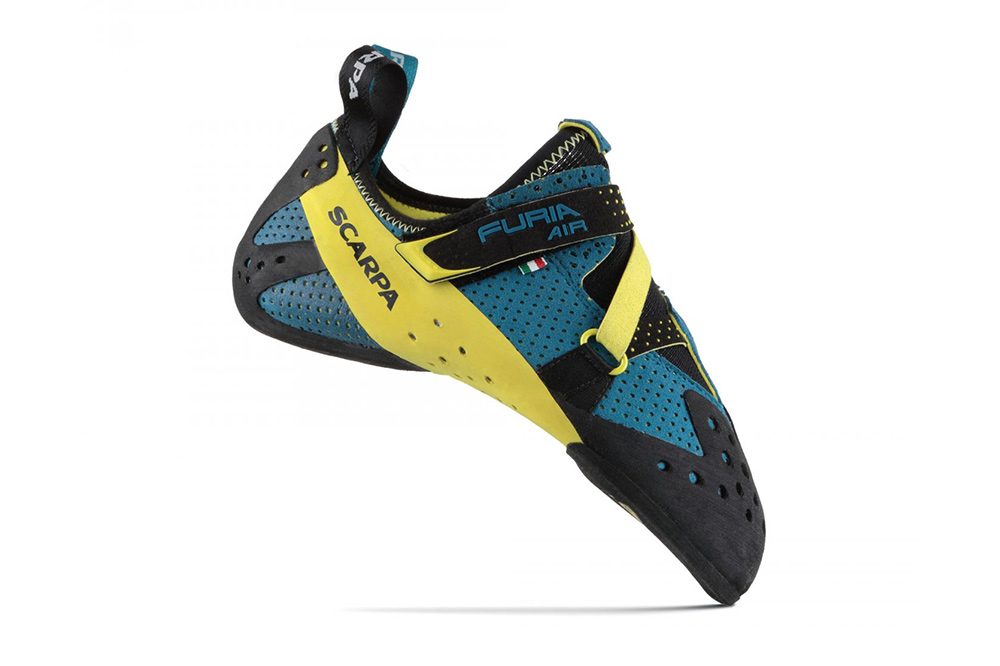
Scarpa Furia Air
Starting with the upper, the Furia Air uses a perforated microfibre material that creates a foot-hugging fit unmatched by any other shoe I've used. The foot-conforming fit is the result of the slightly elastic nature of the microfibre combined with the complex eight-piece upper. This unique construction reduces precision-robbing dead space and eliminates the extended break-in period required with less sophisticated shoes.
-
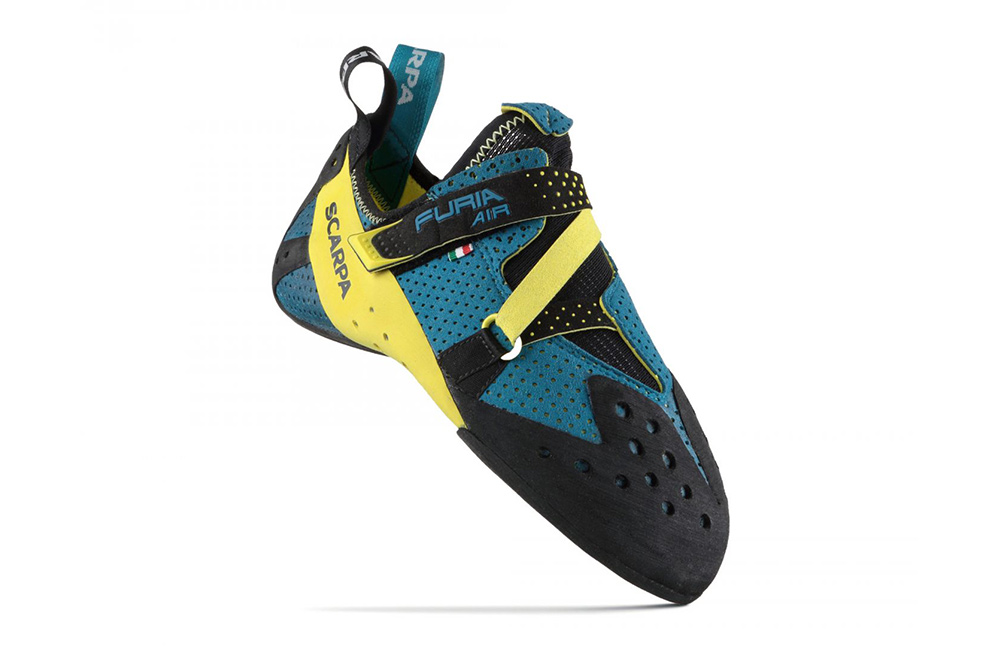
Scarpa Furia Air
Moving to the midsole, Scarpa has wisely chosen to employ a small 1mm-thick Flexan insert under the big toe. This insert adds some precision and support when standing on small holds without compromising sensitivity, smearing and overall performance on steep terrain. It's a smart decision as this small midsole boosts the Furia Air's versatility, especially when compared to other soft shoes.
If you are spending any time on steep routes or boulder problems, you will love the Furia Air.
-
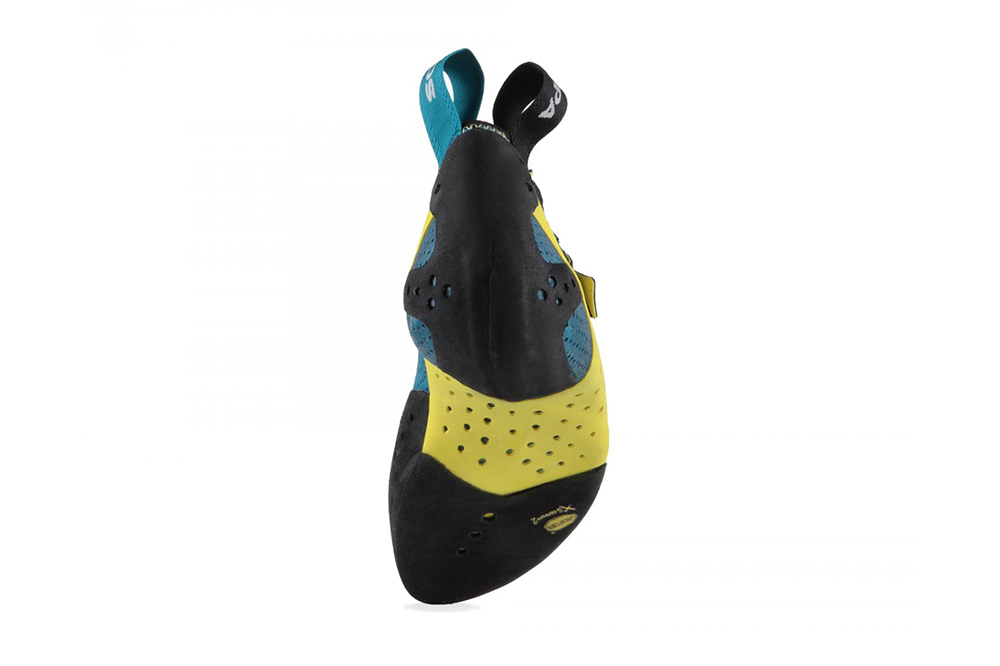
Scarpa Furia Air
Now let's turn our attention to the shoe's shape and rand system. Like most high-end shoes, the Furia Air sports a highly asymmetric and downturned shape – nothing radically new here. However, it stand apart with its innovative tensioned rand system. With the Furia Air, Scarpa has used a unique perforated rand that allows for different tension on the inside and outside of the foot. The amount of tension in the rand is controlled by the number and size of the perforations (more holes or larger holes create different levels of tension). This rand system is not only surprisingly effective, but it also reduces weight (more about this later) and is an excellent example of out-of-the-box problem solving – all wins.
-
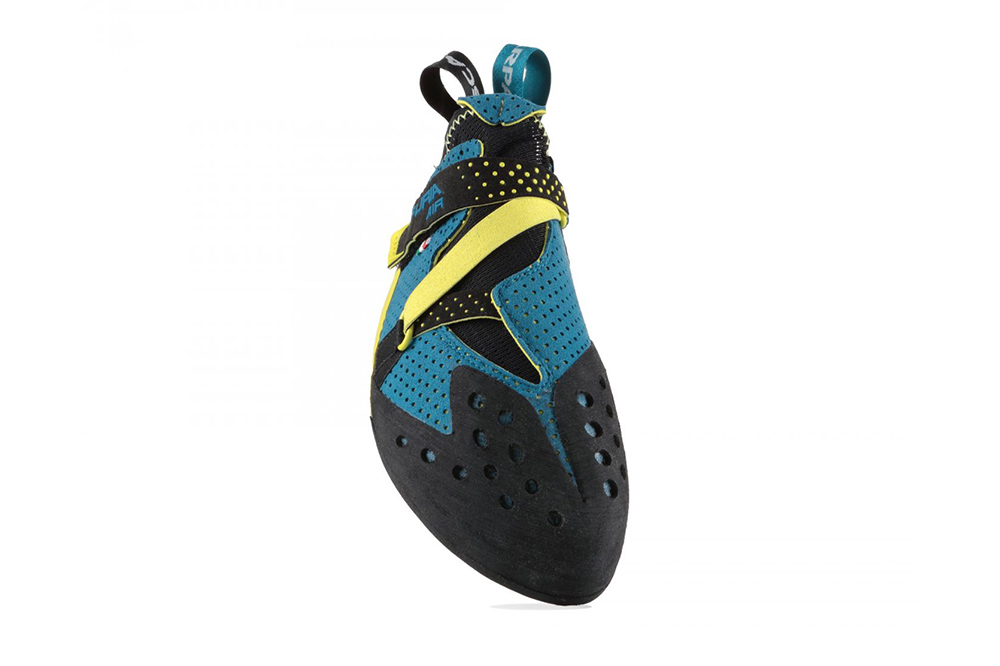
Scarpa Furia Air
Looking at the front of the shoe and in particular the rubber toe patch, it's once again clear that Scarpa has taken a traditionally mundane component and engineered some cool performance features. Scarpa has used their M50 rubber compound that is not only significantly stickier than traditional rubber compounds, but also more elastic. This large swath of rubber provides outstanding toe hooking and also easily conforms to the climber's foot for improved fit and comfort.
-
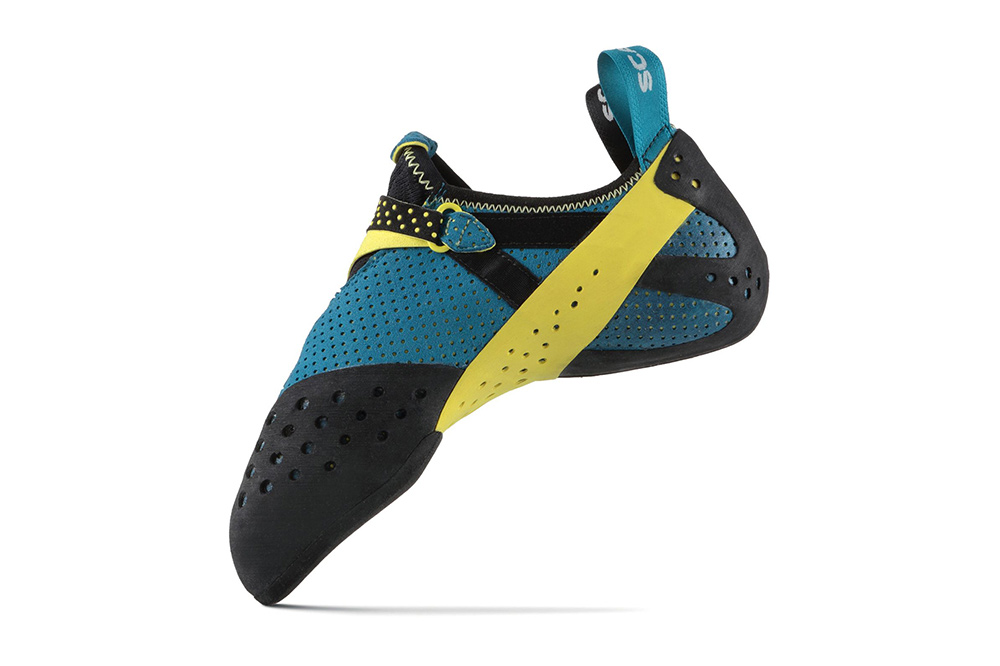
Scarpa Furia Air
At the back of the shoe, Scarpa has built a soft, minimalist-looking heel cup that hooks significantly better than you would suspect. This heel is also the location of another subtle innovation that most climbers could easily overlook. Unlike traditional climbing shoes where the rand wraps behind the Achilles tendon and is then covered by the heel cup rubber, the Furia Air's rand stops shy of the back of the foot. The heel cup rubber then covers this gap. This subtle manufacturing modification spreads the tension forces over a larger area at the back of the shoe. The result is greater comfort while still maintaining a substantial amount of rand tension.
-
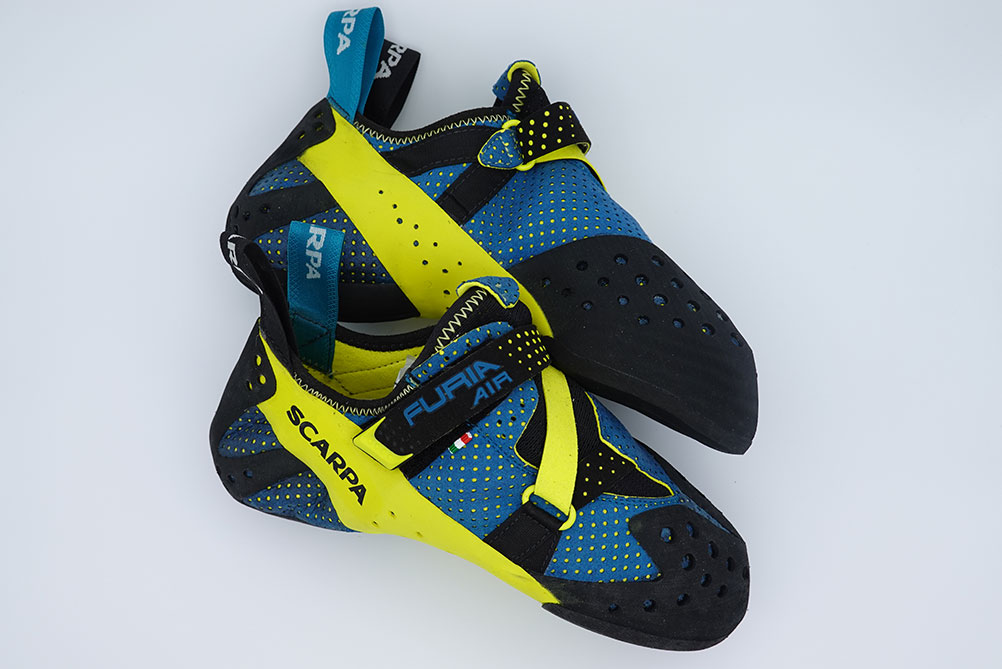
Scarpa Furia Air
Okay, so it's clear that the Furia Air is a soft shoe with some cool construction techniques, but what really matters to most of us is how well it climbs. Well, if you are spending any time on steep routes or boulder problems, you will love the Furia Air. It really is as good if not better than any soft shoe I've used in over 30 years of climbing. But what I really appreciate about this shoe is that still works when the climbing becomes less steep. Don't get me wrong, the Furia Air would not be my first choice for dancing up delicate face routes, but it does a surprisingly good job of holding its own on smaller footholds – especially when considering the softness of the shoe.
-
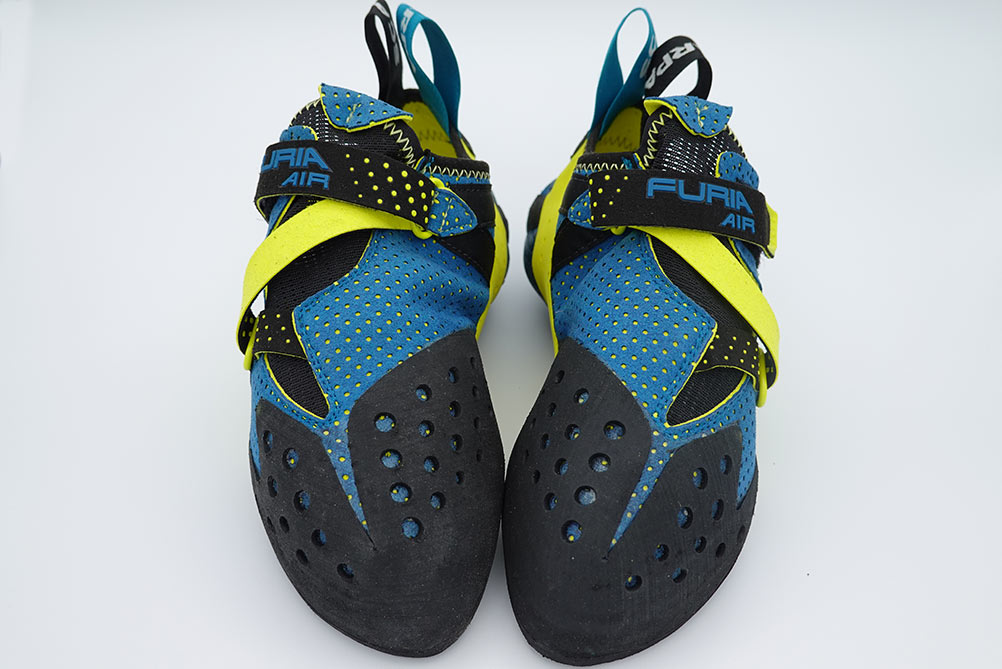
Scarpa Furia Air
So, do I have any reservations about the Furia Air? Well, fundamentally, this is still a specialized shoe and perhaps not a great choice for new climbers that lack foot strength and smooth footwork. Also, I think Scarpa did not do themselves any favours by stressing the shoe's low weight during some early interviews (I touched on the gram shaving earlier in the review). Yes, the Furia Air is very light (possibly the lightest shoe on the market), but I think the real win is its softness and sensitivity. So is it sensitive because it's light, or is it light because it's so sensitive? It's a bit of a chicken-and-egg conversation, but I would have preferred the low weight to be a much more secondary component in the discussion.
Outside of these two relatively minor issues, I cannot recommend the Furia Air enough. In my opinion, there is no better soft shoe on the market today.
Outside of these two relatively minor issues, I cannot recommend the Furia Air enough. In my opinion, there is no better soft shoe on the market today.
You can find out more about the Scarpa Furia Air and other great Scarpa products at www.scarpa.com.
Join the discussion of this and other climbing related stories at www.ontarioclimbing.com/forum/
Join the discussion of this and other climbing related stories at www.ontarioclimbing.com/forum/









